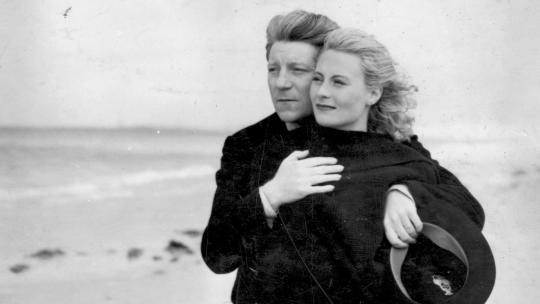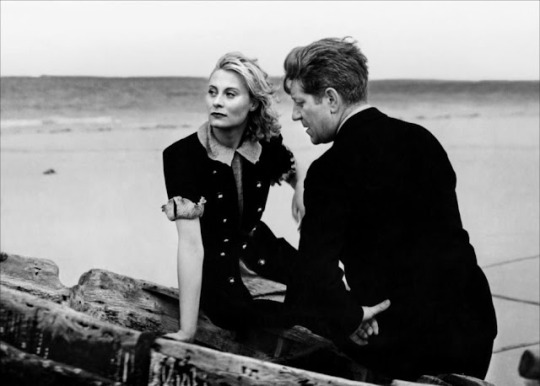#Marcel Pérès
Explore tagged Tumblr posts
Photo










La fiancée du pirate (AKA A Very Curious Girl) | Nelly Kaplan | 1969
#Nelly Kaplan#La fiancée du pirate#1969#A Very Curious Girl#Dirty Mary#Bernadette Lafont#Georges Géret#Marcel Pérès
494 notes
·
View notes
Photo

Remorques, Jean Grémillon (1941)
#Jean Grémillon#Jacques Prévert#André Cayatte#Jean Gabin#Madeleine Renaud#Michèle Morgan#Charles Blavette#Jean Marchat#Nane Germon#Jean Dasté#René Bergeron#Henri Poupon#Anne Laurens#Marcel Pérès#Fernand Ledoux#Armand Thirard#Roland Manuel#Yvonne Martin#1941
7 notes
·
View notes
Photo

#children of paradise#explain#fight#kick#les enfants du paradis#marcel carné#marcel pérès#mime#pierre brasseur
8 notes
·
View notes
Photo

3 notes
·
View notes
Photo

#the milky way#paul frankeur#laurent terzieff#alain cuny#Édith scob#bernard verley#françois maistre#claude cerval#pierre clémenti#julien bertheau#michel piccoli#georges marchal#jean piat#daniel pilon#claudio brook#julien guiomar#marcel pérès#delphine seyrig#jean-claude carrière#michel etcheverry#luis buñuel#1969
1 note
·
View note
Text
Odoriferum lilium
509. Odoriferum lilium, Ensemble Organum, Marcel Pérès (Ensemble Organum, Marcel Pérès, Répons de Matines pour la fête de Saint Bernard, Chant Cistercien, 1991) (Harmonia Mundi)
510. Koul chi al Oualidine, Hasna El Becharia (Hasna El Becharia, Djazair johara) (Label bleu/Indigo, 2001)
⌘
1 note
·
View note
Photo

Marcel Pérès Studio Harcourt
1 note
·
View note
Audio
Guillaume de Machaut (1300-1377)
De toutes flours
Codex Faenza, Italie quinzième siècle
Ensemble Organum, dir. Marcel Pérès
3 notes
·
View notes
Photo

Michèle Morgan and Jean Gabin in Remorques (Jean Grémillon, 1941) Cast: Jean Gabin, Madeleine Renaud, Michèle Morgan, Charles Blavette, Jean Marchat, Nane Germon, Jean Dasté, René Bergeron, Henri Poupon, Anne Laurens, Marcel Pérès, Marcel Duhamel. Screenplay: Jacques Prévert, André Cayatte, based on a novel by Roger Vercel. Cinematography: Armand Thirard. Production design: Alexandre Trauner. Film editing: Yvonne Martin. Music: Roland Manuel. Remorques features Jean Gabin at his most effortlessly rugged and romantic, playing André Laurent, the captain of a tugboat that rescues distressed ships and is paid a percentage of the assessed value of their salvaged cargo. He's happily married to the delicate Yvonne (Madeleine Renaud), who longs for him to give up the hazardous work and retire to a less stormy port. Still, André is also devoted to his longtime crew and is reluctant to leave them to the mercies of the company's management. One stormy night they go out to rescue a ship whose captain, Marc (Jean Marchat), is a nasty piece of work. Among other things, he has a very unhappy wife, Catherine (Michèle Morgan), who manages to escape from the ship in a lifeboat that is picked up by André and his crew. When the storm begins to subside, Marc breaks the towline that is pulling his ship to shore and heads to the port of destination under his own steam, thereby depriving André's tug of its share of the rescue money. But André has salvaged something else from the rescue: Catherine, to whom he is attracted at the peril of his marriage. As their relationship heats up, however, Yvonne becomes seriously ill. Director Jean Grémillon makes the most of this blend of action and romance, keeping it from sinking into mush by leavening things with solid supporting performances and providing a piquant, bittersweet outcome. Remorques was made under difficult circumstances as France fell to the Germans, and was not released until after its stars, Gabin and Michèle Morgan, had left the country for Hollywood.
3 notes
·
View notes
Video
youtube
Baude Cordier (c.1364-before 1440) : "Tout par compas" (rondeau-canon, fol. 12) (3 voices)
Source: "Ensemble Organum, Marcel Pérès, dir.
Gérard Lesne (countertenor), Josep Benet (tenor), Josep Cabré (baritone), François Fauché (bass), Nanneke Schaap (vielle), Marcel Pérès (clavicythérium)
6 notes
·
View notes
Audio
Josquin Desprez (1440-1521) Agnus Dei. Missa Pange lingua
Josquin Desprez – Missa Pange Lingua Ensemble Clément Janequin. Ensemble Organum, Marcel Pérès (1986, Harmonia Mundi – HMC 901239)
youtube
3 notes
·
View notes
Photo

A Very Curious Girl (La fiancée du pirate), Nelly Kaplan (1969)
#Nelly Kaplan#Claude Makovski#Michel Fabre#Bernadette Lafont#Georges Géret#Henri Czarniak#Claire Maurier#Julien Guiomar#Jean Parédès#Pascal Mazzotti#Jacques Marin#Francis Lax#Michel Constantin#Marcel Pérès#Louis Malle#Jean Badal#Georges Moustaki#Noëlle Boisson#Gérard Pollicand#1969#woman director
3 notes
·
View notes
Video
youtube
Gothic chant: Benedicamus Domino
Aided by practices passed down by tradition and the tools of musical archaeology, Marcel Pérès leads a broader inquiry into the tracing and preserving our liturgical and musical legacy. In reconstructing this solemn Mass for the Nativity of the Virgin, the Ensemble Organum presents a gem of devotional music which exemplifies the Notre-Dame School: a repertory of 13th-century polyphony that profoundly influenced further development of European sacred music. Notable is the richly eastern fragrance introduced by Master Lycourgos Angelopoulos.
Turn on Closed Captions (CC) for different translations
8 notes
·
View notes
Video
youtube
Le Chant des Templiers: I. Antiphona "Crucem sanctam" · Ensemble Organum · Marcel Pérès
8 notes
·
View notes
Link
1 note
·
View note
Note
🎸
angel - aerosmith
ohedo julia night - mitchie m feat. miku
pick it up - famous dex
heavenly - cigarettes after sex
kyrie eleïson - marcel pérès
there is a lot going on here, i'm well aware. i think it is a bit too ambitious a venture to do an entire wholescale library shuffle for this ask meme
1 note
·
View note